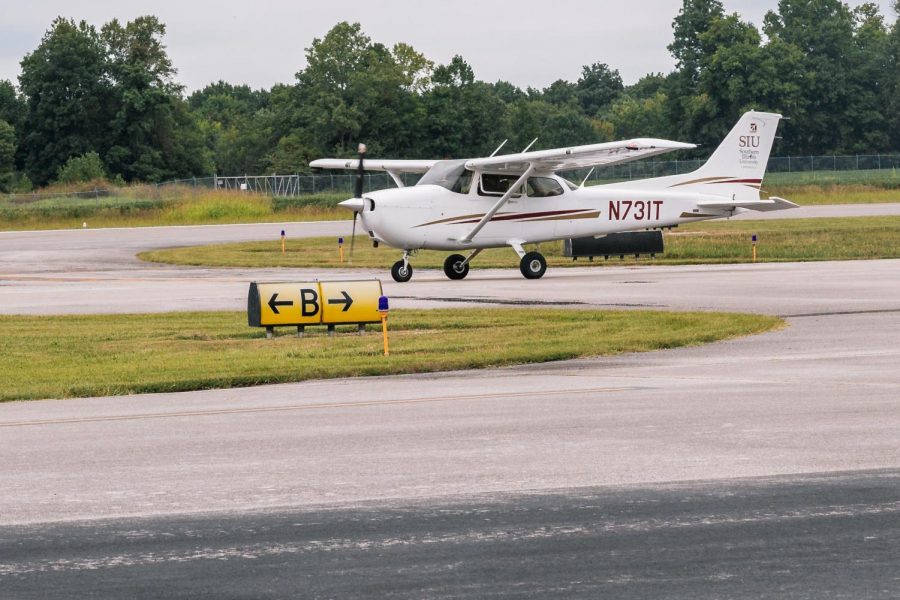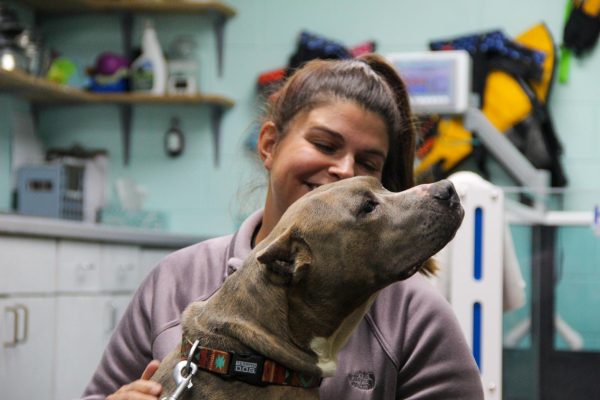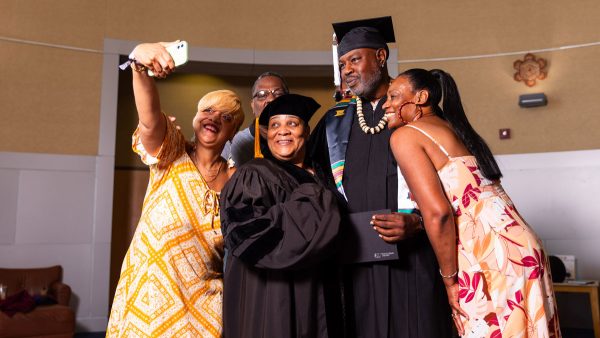Aviation History Month spotlight on SIU School of Aviation
Chris Bishop | @quippedmediallc
A plane prepares to takeoff Sept. 3, 2021 at SIU Automotive Technology in Murphysboro, Ill.
In December,1960, Southern Illinois University Carbondale (SIU), purchased a flight training and fueling company called Midwest Aero services, a moment generally considered the start of aviation at the school, Professor Emeritus David NewMyer said.
“At that point, we didn’t have any aviation majors,” NewMyer said. “We just bought a few aircrafts… We sort of modeled our program after the University of Illinois, which today no longer has a program really.”
For a few decades, SIU operated the facility primarily as a “university owned enterprise,” NewMyer said.
Advertisement
It was a place the public could buy fuel, get flight training, and it offered other airport services which paid for the facility.
In that time, the university also developed degree programs, at first a two-year Aviation Maintenance Technology (AMT) degree in 1965, followed by an Avionics Technology degree. The first bachelor’s degree was opened in 1973, NewMyer said.
It wasn’t until 1984 that the school started a flight program.
SIU aviation started small because Federal Aviation Administration (FAA) rules capped the program size, NewMyer said, and the state didn’t initially chip into the program funding.
The program has since evolved, buoyed by a $64 million transportation education facility, and SIU now has four four-year aviation degree programs, including some of the largest programs at the university, Associate Professor Samuel Pavel said.
“The school itself has 639 students, which is the biggest college there has been,” Pavel said.
The degree programs involve hands-on learning where students are able to work with airplanes and learn from their own work, NewMyer said.
Advertisement*
“The previous chair, Dr. David NewMyer… he took it to the next level. He came in and then started focusing on getting us respect at the national level, hiring some top people,” Pavel said. “He also focused on the Flying Salukis to make sure that they would be out front and it worked.”
The university aviation program has since grown to a national success, in part evidenced by the Flying Salukis, who have won nine national awards, placed third in the nation, and have won the regional competition 10 years in a row, Professor José Ruiz said.
“Ultimately, I think the Flying Salukis to be a testament of the tips of flight training they can receive here,” Ruiz said.
Ruiz said, while pilots are often the face of the aviation program, people should know there’s significantly more to the program than flight training.
“That’s really a small component of the industry. It’s a very elite component, but a small component,” Ruiz said. “We have airport managers, air traffic controllers, we have dispatchers, you have all the support personnel that are out there.”
Aviation professionals are also extremely in demand, Ruiz said, and will have a lot of available career opportunities over the next 20 to 25 years.
“I really believe that we need to reach out to people, like, oh community colleges, high schools, grade schools, middle schools, whatever the case might be to make people aware that this is a viable career option,” Ruiz said.
One former SIU student, Ryan Cunningham, even went on to fly for the Blue Angels, a renowned US Navy flight demonstration squadron that performs around the country, NewMyer said.
“I think at times in this society, we tend to take aviation for granted,” Ruiz said. “It’s a phenomenal thing that should be appreciated… the fact that you’re traveling 600 miles an hour at 300 feet, it’s amazing.”
News Editor Jason Flynn can be reached at jflynn@dailyegyptian.com, by phone at 872-222-7821 or on Twitter at @dejasonflynn. Staff reporter can be reached at carolynd@dailyegyptian.com.
To stay up to date with all your southern Illinois news, follow the Daily Egyptian on Facebook and Twitter.
Advertisement
















Kurt Kuehnert • Nov 20, 2021 at 11:04 am
Great story! But, I believe the Ruiz quote was supposed to be 600 mph at 30,000 feet. Not 300 feet. I was a student on the main campus from 1965 – 1970 and some of my buddies were aviation students.